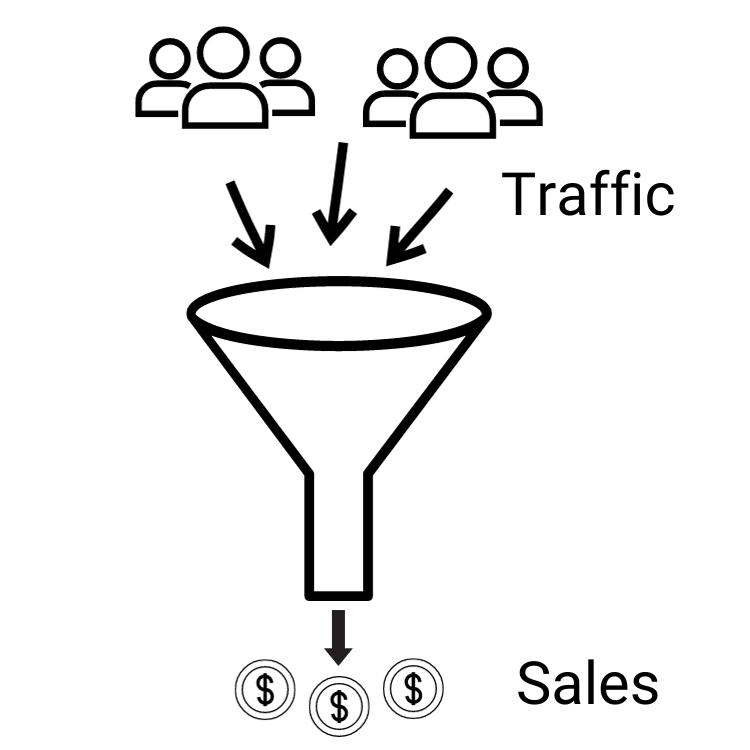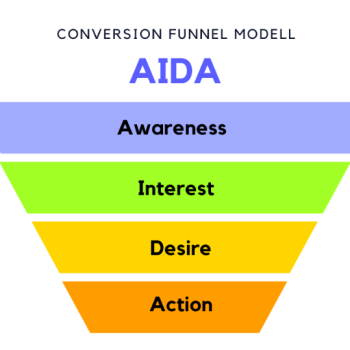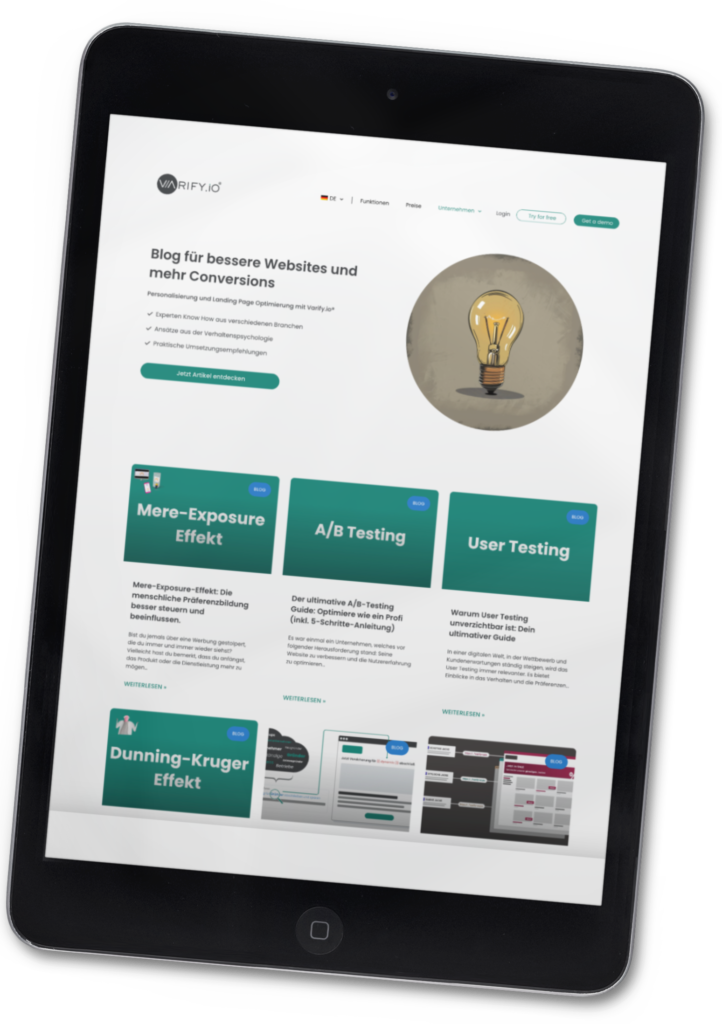What is a conversion funnel?
A conversion funnel, also called a sales funnel, is a method of mapping a customer's journey from their first touch point with your brand to their ultimate conversion - such as a purchase. The funnel has four main phases: Awareness, Interest, Desire, and Action (AIDA).

Conversion Funnel vs. Sales Funnel
Although the terms are often used interchangeably, there is a difference between a conversion funnel and a sales funnel. While the conversion funnel represents the entire process from initial interaction to purchase, the sales funnel focuses more on the final stage of this process - the actual sales transaction. So a sales funnel could be considered part of a conversion funnel.
The phases in the conversion funnel

Awareness: In this phase, a potential customer becomes aware of your brand or product for the first time. This can happen through a search engine query, a social media ad, or a friend's recommendation.
Interest: Now that the customer knows about your brand, he shows interest in your products or services. He informs himself further, for example, by visiting your website, reading blog posts, subscribing to newsletters or researching product reviews.
Desire: The customer now has a specific product or service in mind and is considering buying it. He compares products, reads customer reviews and looks for discount codes or offers.
Action (plot): Here the customer is ready to make the purchase. He adds the product to the shopping cart, enters his payment and shipping information and confirms the purchase.
Application of the conversion funnel in e-commerce
Understanding and applying the conversion funnel is especially important in e-commerce. Here are some examples of how the stages of the funnel can be applied to an e-commerce business:
Awareness: You run a social media advertising campaign to raise awareness of your brand. You could also use SEO to become more visible in search results or run a blog to provide helpful content to attract more visitors to your website.
Interest: The customer visits your website and looks at your products. Here you can convince him with appealing product descriptions, high-quality images and maybe even video demos.
Desire: Now that the customer has shown interest, it's your job to turn that interest into a concrete desire. For example, you could highlight customer reviews and testimonials, offer special deals or discounts, or emphasize the benefits of your products compared to the competition.
Action: Finally, it's time to make buying easier. A simple and user-friendly checkout process, different payment options and clear communication about shipping costs and delivery times can help. After the purchase, don't neglect customer service to build a long-term relationship with your customer and encourage repeat purchases.
How do you optimize a conversion funnel?
Optimizing a conversion funnel is an ongoing process where you analyze each stage of the funnel and make improvements to increase conversion rates. Here are some tips on how to do it:
- Use web analytics to understand where your customers are bouncing and why.
- Improve the user experience on your website to increase conversion rates.
- Personalize your content to better meet the needs and preferences of your customers.
- Test different elements of your website (like headlines, CTA buttons, images, etc.) with A/B tests.
- Follow the principles of "Permission Marketing" by Seth Godin and build a relationship with your customers instead of overwhelming them with sales pressure.
A well-designed and optimized conversion funnel can have a significant impact on your digital marketing success. By understanding and improving the customer journey, you can not only drive more sales, but also build a stronger relationship with your customers and turn them into loyal fans of your brand.
Common mistakes and how to avoid them
A common mistake is neglecting the upper stages of the funnel and focusing only on the final action. This can lead to overlooking potential customers who are still in the early stages of their buying decision. It is important to consider all phases of the funnel and develop appropriate strategies for each phase.
Another common mistake is ignoring data. Data is your best friend when it comes to understanding and optimizing your conversion funnel. It provides valuable insights into your customers' behavior and preferences, allowing you to make informed decisions.
Summary
A conversion funnel is an effective tool to illustrate and optimize the customer journey from the first touch with your brand to the final purchase. By using conversion funnels, you can improve the customer experience, increase conversion rates, and ultimately grow your business. By understanding and applying the principles of conversion funnels, you'll be well on your way to mastering your digital marketing and driving your business to success.
